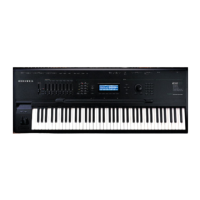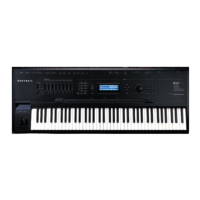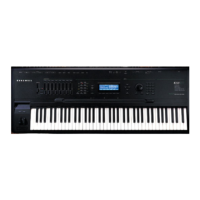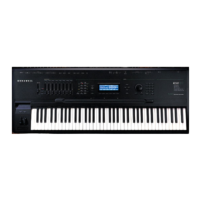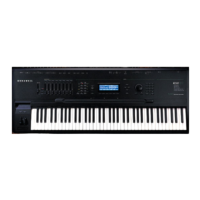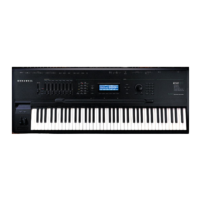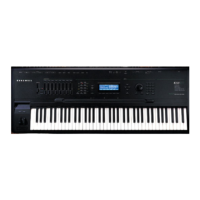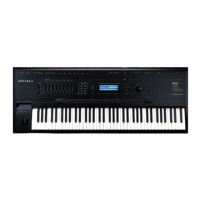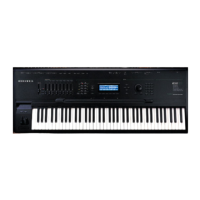Disk Mode
SCSI Termination
13-3
SCSI Termination
Simply put, SCSI termination prevents the electrical signals used by SCSI devices from being
reflected from unconnected SCSI ports, and possibly disrupting the data stream. The rule for
SCSI termination is that the two SCSI devices on the ends of a chain of SCSI devices must be
terminated, and all devices in between, however many, must be unterminated. Newer SCSI
devices usually make it easy to enable or disable their termination settings. Older SCSI devices
may require an external terminator to be installed. These are available at all personal computer
stores. Make sure you get the right size for your device (25-pin or 50-pin).
It’s impossible to describe all the possible configurations of SCSI devices, so we’ll provide you
with a few general guidelines that will cover the requirements for most SCSI systems. If you’re
chaining large numbers of SCSI devices together, you may have to do a little juggling, but
chances are you’ll already have some experience with SCSI termination.
First of all, it’s
very
important that you terminate your SCSI system properly. Improper
termination can result in lost data, can interfere with the operation of your SCSI devices, and
over the long term, can damage them.
If your SCSI system includes an Apple Macintosh® personal computer, you’ll need to be sure
that it is internally terminated. This is because the Mac has only one SCSI port, and therefore is
necessarily going to be at one end of your SCSI chain. If your Mac has an internal hard disk,
you can go ahead and hook it up, since it’s sure to be internally terminated. Some Macs without
internal hard disks are
not
terminated, so this may cause a problem. If your Mac has no internal
hard disk, and you’re not sure whether it’s internally terminated, you should call your local
Apple dealer for confirmation.
If your SCSI system includes only the K2500 and an internally terminated Mac, you’re all set.
Just connect the Mac’s SCSI port to either of the K2500’s SCSI ports, and you’re ready to roll.
The K2500 is internally terminated, so in this case, you’ve satisfied the requirement of
terminating both ends of the chain.
If you have an internally terminated Mac, a K2500 and an external hard disk with
two
SCSI
ports, setting up is also painless. Connect the Mac’s SCSI port to one of the hard disk’s SCSI
ports, and the K2500’s SCSI port to the hard disk’s other SCSI port. Make sure the hard disk is
not terminated, since it’s in the middle of the chain. In this configuration (with a terminated
Mac at one end and the K2500 at the other), you can chain up to six hard disks between them.
Make sure they’re all unterminated, and don’t forget to set each disk’s SCSI ID to a different
value.
Disabling the K2500’s SCSI Termination
If you have a Mac, a K2500 and an external hard disk with only
one
SCSI port, you’ll need to
have your K2500 serviced. The only way to connect a system of this sort is to have the K2500 in
the middle (with one SCSI port connected to the Mac, and the other to the hard disk). In this
case, you’ll need to have your Kurzweil/Young Chang dealer or service center remove the
K2500’s internal termination. This is very easy for a qualified technician to do, and shouldn’t
take more than a half hour or so. Late model K2500s have a "SCSI Termination Enable/Disable"
switch on the back panel that lets you change the termination status of your K2500 without
opening the unit.
If you install an internal hard disk in your K2500, the technician who does the installation
should remove the K2500’s termination as part of the installation. This will not necessarily
enable you to connect the K2500 in the middle of a SCSI chain, however, since the internal hard
disk has its own termination. With an internal hard disk, the K2500 should be installed at the
end of a SCSI chain. The internal hard disk’s terminator will provide the termination for itself
and the K2500. You can remove the termination from the internal hard disk as well, if you want
to connect your K2500 in the middle of a SCSI chain, though we do not recommend this.
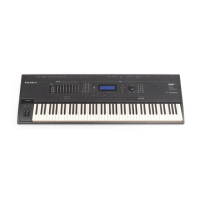
